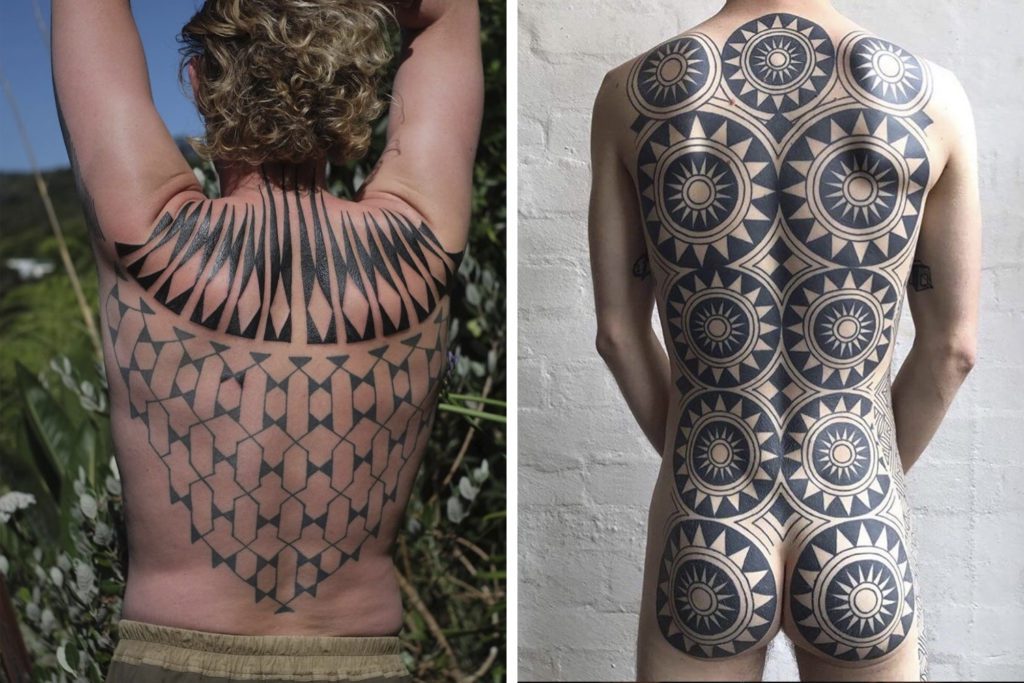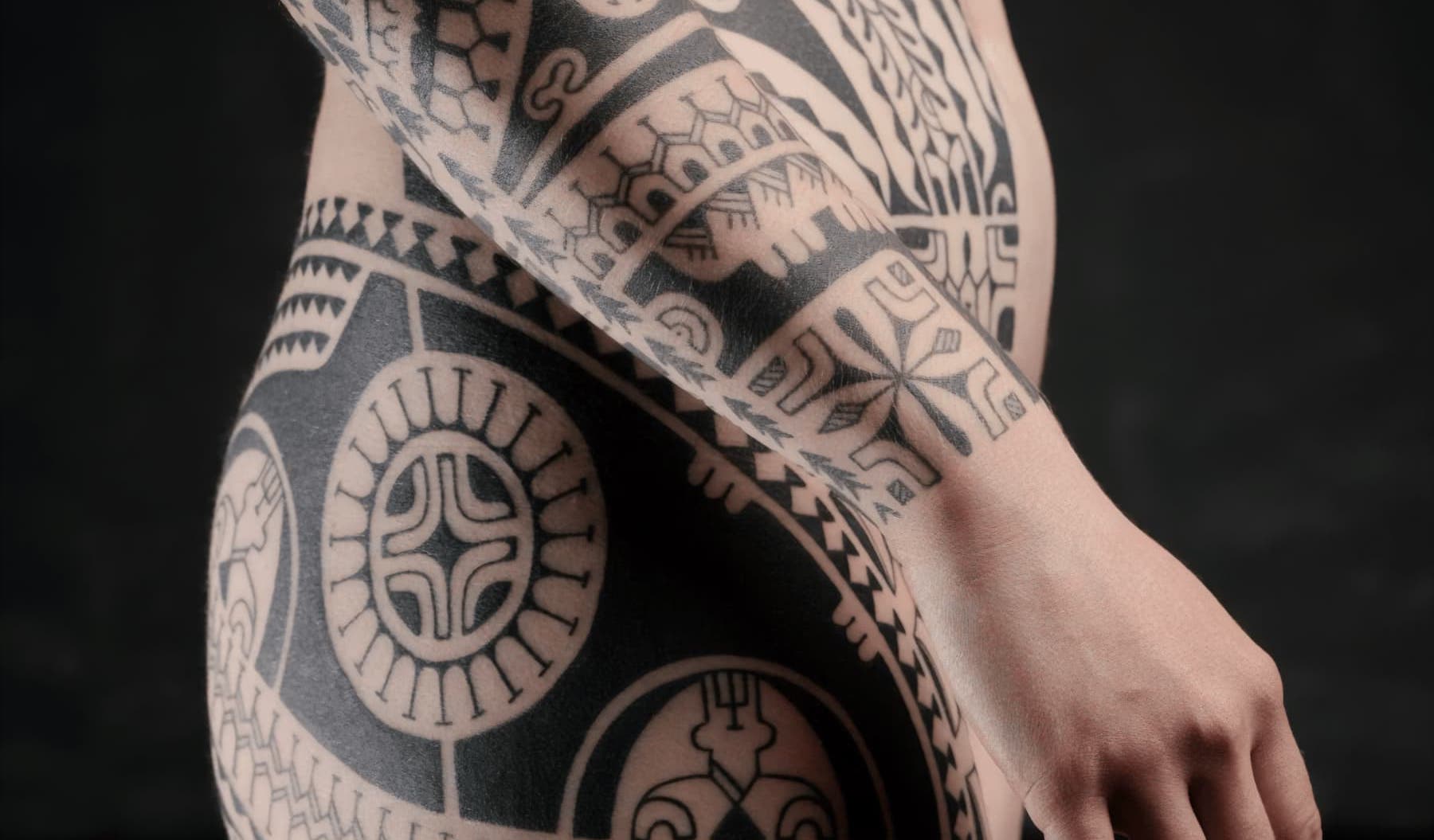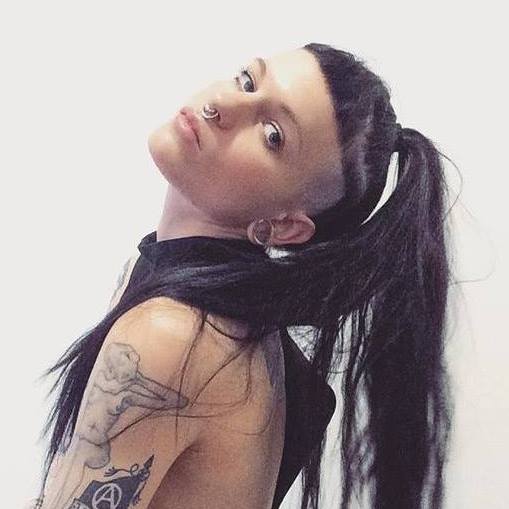
Tribal Tattoos: History, Styles and Artists
- Мanagement
- Styles
- Tribal

In this article, we explore the history, styles, and craftsmen who keep the tribal tattoo tradition alive.
- The most famous example of ancient tribal tattoos is perhaps found on the mummy of Ötzi, who lived over 5,000 years ago. His tattoos are made up of dots and lines and were probably used for medical purposes.
- A mummy named Princess Ukoka has the most intricate of the ancient tribal tattoos. It is believed that her works denote not only social status, but also family ties, symbols and philosophy.
- Perhaps the most famous tribal tattoos in modern culture are the Polynesian tattoos. Polynesian patterns illustrate rites of passage, wartime achievements, clan affiliation, geographic location, personality, and philosophy.
- Whang-od, Igor Kampman, Gerhard Wiesbeck, Dmitry Babakhin, Victor J. Webster, Hanumantra Lamara and Hayvarasli are well known for their tribal inspired tattoos.
- History of tribal tattoos
- Tribal tattoo styles
- Artists who make tribal tattoos
The origin of all tattoos lies in the ancient history of mankind. Tribal tattoos start when the society timeline begins, in scattered locations around the world. Black dots and lines, usually for ritual or sacred practices, are the main components of an extensive tribal tattoo culture. In this article, we'll learn more about the humble origins of tattooing, how humanity's oldest art form came into being, the overlapping histories, styles, and contemporary artists who keep this ancient tradition up to date.
History of tribal tattoos
Perhaps the most famous of all tribal tattoos is Otzi the Iceman. Found on the border between Austria and Italy, Otzi's body is covered in 61 tattoos, all of which are incredibly simplified and consist of only horizontal or vertical lines. Each line was created by charcoal tracing small cuts, but don't be surprised by their simple markings; although he lived over 5,000 years ago, his society was surprisingly advanced. A new study published in the International Journal of Paleopathology explains that not only did the herbs and plants found with Otzi have significant medical significance, but all of his tattoos match acupuncture points. These tiny clues about life in the early Bronze Age give us an interesting perspective on the use of the first tribal tattoos: they were most likely a cure for illness or pain.
Primitive samples of tribal tattoos have been found on many mummies from different parts of the globe and date back to different eras. The second oldest tattoo belongs to the mummy of a Chinchorro man who lived between 2563 and 1972 BC and was found in northern Chile. Tattoos have been found on mummies in Egypt, the oldest showing a pattern of simple dots around the lower abdomen, but more recently a preserved body has been discovered with more intricate designs, including lotus flowers, animals, and Wadjet's eyes. , also known as the Eye of Horus. The woman believed to be a priestess is said to have been mummified around 1300 and 1070 BC. Her ink is also a great clue to the ethnology of tattoos in various communities; many archaeologists believe that these objects, in particular, have a very ritual and sacred symbolism.
However, perhaps the oldest mummy with tribal tattoos, the one closest to our modern idea of tattoos, is the pattern on the skin of Princess Ukok. She is believed to have died around 500 BC. in what is now southwestern Siberia. Her tattoos depict mythological creatures and are extremely ornate. Much more detailed and pigmented than the mummy finds of the past, the princess is a link to the evolution of tribal tattooing and modern tattooing. It is believed that her works denote not only social status, but also family ties, symbols and philosophy.
The same can be said about Polynesian tattoos. Practiced for thousands of years, these tribal tattoos are one of the mainstays of modern tattooing. Like Princess Ukoka, Polynesian drawings illustrate initiation rites, wartime achievements, clan affiliation, geographic location, personality, and philosophy. With a lot of iconography and symbolism, these body art pieces have survived over the years through preservation and respect for culture. Even now, many tribal tattoo artists are certainly aware of appropriation and only practice this particular style if they are fully educated and trained in it. Large black stripes, lines, dots, swirls, abstract motifs and symbols continue to inspire artists and tattoo enthusiasts around the world.
Tribal tattoo styles
Tribal tattoos have been found all over the world, are thousands of years old and, along with rock art and pottery, are the oldest surviving art form of mankind. It is clear that humanity has always had a deep need for expression and meaning; tattoos continue to be the method of this. Luckily, techniques, materials, and information are circulating quite freely these days, and the tribal style of tattooing is based on many different folk arts and aesthetics. Still made up mostly of black lines, dots, and abstract shapes, artists continue to push the boundaries. Shaping new symbols and incorporating their personal style with ancient tribal tattoos, clients can choose from many different modes.
Artists who make tribal tattoos
Perhaps the most famous tattoo artist of the tribe is Wang-od. Born in 1917, at the age of 101, she is the last of the great mambabats, a Kalinga tattoo artist from the Buscalan region of the Philippines. Mambabatok tattoos are lines, dots and abstract symbols. Similar to her work is Hayvarasli's tattoo, which uses the same simple graphic elements as well as large areas of black color and shape to create larger works, often as bodysuits. Victor J. Webster is a blackwork tattoo artist who performs several different types of tattoos and tribal tattoos depending on the project, including Maori, Native American, Tibetan and others. His work is the perfect embodiment of the enormous connection that is the artistic expression of a person. Hanumantra Lamara is another artist who seamlessly blended modern and primitive tattoo forms to create his signature Blackwork style.
As interest in the tribalist aesthetic has steadily evolved since the 1990s, there are many artists who either create their own take on folk art or stay true to the original form. Igor Kampman does many traditional Native American tattoos, including the Haida tattoos, which originated in Haida Gwaii, off the North Pacific coast of Canada. These tribal tattoos often include abstract animals such as crows, killer whales, and other images most commonly seen on Haida totem poles. Dmitry Babakhin is also known for his respectful and dedicated work in the Polynesian style, while Gerhard Wiesbeck works with a variety of tribal tattoos, from Celtic knots to sacred geometric shapes.
As tribal tattooing spans many cultures and histories, many different styles have emerged and many different artists continue this ancient tradition. As with most cultural artwork, it is important to know the history and background of the tribe you would like to emulate in the form of a tattoo. It's often easy to disrespect tribes by appropriating their sacred rituals and symbols just for the sake of aesthetics. However, fortunately, there are always highly qualified and knowledgeable craftsmen to help you along the way.
JM
By Justin Morrow
Leave a Reply